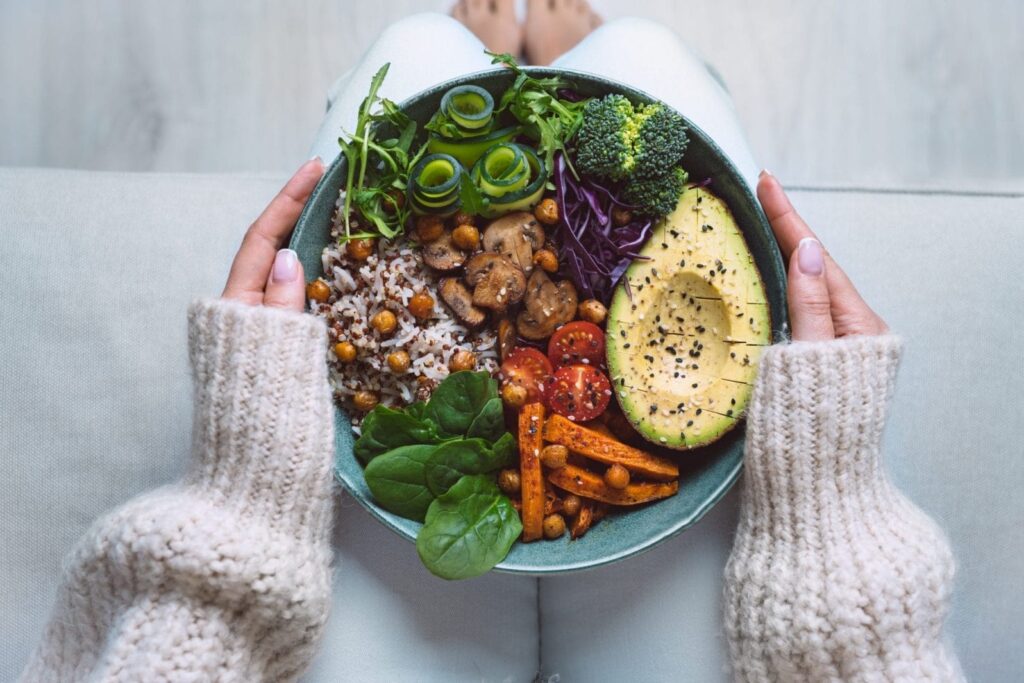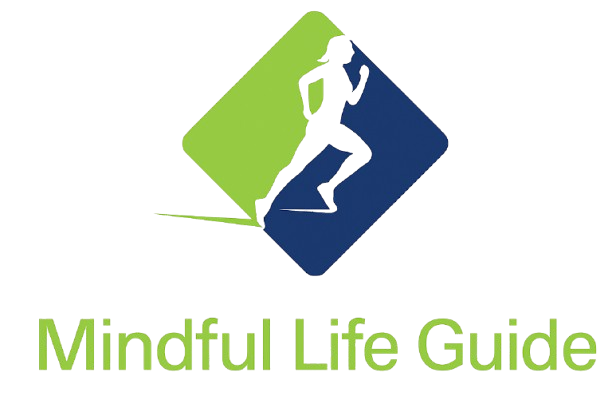
Imagine this: It’s a crisp Saturday morning, and I’m in my kitchen, blending a smoothie that smells like a tropical paradise. I toss in a scoop of protein powder, a handful of spinach, and some creamy Greek yogurt, knowing this nutrient-packed drink will keep me energized for my weekend hike. As someone who’s been vegetarian for over a decade, I’ve learned that a high-protein vegetarian diet isn’t just doable—it’s downright delicious and versatile. Whether you’re a lifelong veggie enthusiast or just dipping your toes into Meatless Monday, getting enough protein can feel like a puzzle. But don’t worry—I’ve got you covered with practical, mouthwatering ideas, expert insights, and a sprinkle of personal stories to make your high-protein vegetarian journey both fun and sustainable. Let’s dive into the world of plant-powered protein and explore how to fuel your body without missing a beat.
Why High-Protein Vegetarian Diets Matter
Protein is the building block of life—think muscles, hormones, and even your immune system. For vegetarians, hitting daily protein goals (roughly 0.36 grams per pound of body weight, per the National Academy of Medicine), can seem tricky without relying on meat. But here’s the good news: plant-based proteins are not only abundant but also come with fiber, vitamins, and antioxidants that meat often lacks. I remember my early vegetarian days, worrying I’d feel sluggish without chicken or fish. Spoiler alert: I didn’t. By focusing on nutrient-dense, protein-rich foods, I felt stronger and more vibrant than ever. A high-protein vegetarian diet supports muscle repair, keeps you full, and can even lower your risk of chronic diseases, according to Harvard Health. Whether you’re an athlete, a busy parent, or just someone who wants to feel their best, prioritizing protein is a game-changer.
The Protein Powerhouses: Top Vegetarian Sources
Let’s get to the good stuff—where to find all that glorious protein. The vegetarian world is bursting with options that are both tasty and nutrient-packed. Here’s a rundown of my go-to sources, complete with ideas to make them shine in your meals:
- Lentils: With about 18 grams of protein per cooked cup, lentils are a budget-friendly superstar. I love whipping up a spicy lentil curry with coconut milk for dinner—it’s cozy, filling, and freezes like a dream. Try them in soups, salads, or even lentil patties for a burger vibe. The Kitchn has some fantastic lentil recipes to spark your creativity.
- Tofu and Tempeh: Tofu packs around 10 grams of protein per half-cup, while tempeh boasts closer to 15 grams. I used to shy away from tofu, thinking it was bland, until I learned to marinate it in soy sauce and sesame oil before baking. Now? It’s a weekly staple. Tempeh’s nutty texture is perfect for stir-fries or crumbled into chili. Check out Minimalist Baker for foolproof tofu tips.
- Greek Yogurt: A single cup delivers about 20 grams of protein. I often mix it with berries and chia seeds for a quick breakfast or use it as a creamy base for dressings. Opt for unsweetened varieties to keep sugar in check, as suggested by Healthline.
- Quinoa: This ancient grain offers 14 grams of protein per cooked cup and is a complete protein, meaning it has all nine essential amino acids. Swap rice for quinoa in stir-fries or toss it into salads for a nutty crunch. BBC Good Food has a great guide on quinoa’s benefits.
- Chickpeas: At 15 grams per cooked cup, chickpeas are my go-to for hummus, roasted snacks, or creamy curries. I once brought a chickpea salad to a potluck, and it vanished faster than the cheese platter. Pro tip: Save the aquafaba (chickpea liquid) for vegan baking—it’s magic!
- Nuts and Seeds: Almonds, chia seeds, and hemp seeds are protein-packed and perfect for snacking or sprinkling. A tablespoon of hemp seeds adds 10 grams of protein to smoothies or oatmeal. Medical News Today dives into why seeds are nutritional powerhouses.
- Seitan: This wheat-based protein delivers a whopping 25 grams per 100 grams. Its meaty texture makes it ideal for vegan “steaks” or stir-fry strips. I was skeptical at first, but after trying a seitan gyro at a local café, I was hooked.
These sources aren’t just about protein—they’re versatile enough to keep your meals exciting. The key is variety, ensuring you get a range of nutrients while keeping your taste buds happy.
Crafting Balanced High-Protein Meals
Building a high-protein vegetarian meal is like painting a canvas—you want a mix of colors, textures, and flavors. I learned this the hard way after a week of eating plain tofu scrambles (yawn). Here’s how to create balanced, protein-packed meals that don’t skimp on taste:
- Start with a Protein Base: Choose one or two protein sources, like lentils and tofu or chickpeas and Greek yogurt. Aim for at least 20–30 grams of protein per meal.
- Add Complex Carbs: Pair your protein with whole grains like quinoa, brown rice, or whole-wheat pasta. These keep you energized and add fiber. I love a quinoa bowl with roasted veggies and tahini dressing—it’s like a hug in a bowl.
- Incorporate Healthy Fats: Avocados, nuts, or olive oil make meals satisfying and support nutrient absorption. A drizzle of olive oil over a lentil salad elevates it from good to gourmet.
- Load Up on Veggies: Non-starchy vegetables like spinach, broccoli, or zucchini add volume and micronutrients without piling on calories. The Mayo Clinic emphasizes veggies for heart health.
- Season Boldly: Spices, herbs, and sauces can transform a dish. My secret weapon? Smoked paprika on roasted chickpeas—it’s a game-changer.
A typical day might look like this: breakfast of Greek yogurt with chia seeds and fruit (25 grams protein), a lunch of lentil soup with a side of whole-grain bread (20 grams protein), and a dinner of tempeh stir-fry with quinoa and broccoli (30 grams protein). That’s 75 grams of protein without breaking a sweat—perfect for most adults.
Comparison Table: Protein Sources at a Glance
Protein Powerhouse Showdown
| Food | Protein (per cup) | Complete Protein? | Best Uses | Cost (Approx.) |
|---|---|---|---|---|
| Lentils | 18g | No | Soups, curries, patties | $1–2/lb |
| Tofu | 20g (per cup) | Yes | Stir-fries, scrambles, smoothies | $2–3/lb |
| Tempeh | 31g (per cup) | Yes | Stir-fries, sandwiches, tacos | $3–5/lb |
| Greek Yogurt | 20g (per cup) | Yes | Smoothies, dips, breakfast bowls | $1–2/cup |
| Quinoa | 14g | Yes | Salads, bowls, side dishes | $3–5/lb |
| Chickpeas | 15g | No | Hummus, salads, curries | $1–2/lb |
| Seitan | 25g (per 100g) | No | Vegan meats, stir-fries | $3–5/lb |
This table shows how easy it is to mix and match protein sources based on your budget, taste, and cooking style. Lentils and chickpeas are wallet-friendly, while tempeh and seitan offer meaty textures for heartier dishes.
Overcoming Common Challenges
Transitioning to or maintaining a high-protein vegetarian diet isn’t always smooth sailing. I’ve faced my share of hurdles, like the time I overdid it on protein shakes and felt like I was living in a blender. Here are common challenges and how to tackle them:
- Protein Fatigue: Eating the same protein sources can get boring. Rotate your options weekly—try edamame one day, black beans the next. EatingWell has creative recipes to keep things fresh.
- Time Constraints: Prepping protein-rich meals can feel daunting. Batch-cook lentils or quinoa on Sundays, and store them in the fridge for quick meals. I make a big pot of chili that lasts all week.
- Nutrient Gaps: Vegetarians may miss out on nutrients like B12 or iron. Pair iron-rich foods (like spinach) with vitamin C (like bell peppers) for better absorption, and consider a B12 supplement if needed, as advised by Cleveland Clinic.
- Social Settings: Potlucks or dining out can be tricky. I bring a protein-packed dish (like a quinoa salad) to gatherings, ensuring I have options. Many restaurants now offer vegetarian high-protein dishes—check menus online first.
High-Protein Vegetarian Recipes to Try
Let’s get cooking! Here are three recipes that pack a protein punch and are easy to whip up:
1. Spicy Lentil and Veggie Curry
- Protein: ~20g per serving
- Ingredients: 1 cup red lentils, 1 can coconut milk, 1 onion, 2 cups mixed veggies (carrots, zucchini), curry powder, garlic, ginger.
- Instructions: Sauté onion, garlic, and ginger. Add lentils, veggies, coconut milk, and curry powder. Simmer for 20 minutes. Serve with quinoa.
- Why I Love It: This curry is my weeknight savior—quick, freezer-friendly, and bursting with flavor.
2. Crispy Tofu Buddha Bowl
- Protein: ~25g per serving
- Ingredients: 1 block tofu, 1 cup quinoa, 1 avocado, mixed greens, tahini, soy sauce.
- Instructions: Press and cube tofu, marinate in soy sauce, then bake at 400°F for 25 minutes. Assemble bowl with quinoa, greens, avocado, and a tahini drizzle.
- Why I Love It: It’s customizable and feels like a treat, even on busy days.
3. Greek Yogurt Parfait
- Protein: ~22g per serving
- Ingredients: 1 cup Greek yogurt, 1 tbsp chia seeds, ½ cup berries, ¼ cup almonds.
- Instructions: Layer yogurt, berries, chia seeds, and almonds in a glass. Chill for 10 minutes for a refreshing breakfast or snack.
- Why I Love It: It’s my go-to when I need something fast yet filling.
Find more recipe inspiration at Love and Lemons, a treasure trove of vegetarian ideas.
FAQ: Your High-Protein Vegetarian Questions Answered
Q: How much protein do I need daily?
A: It depends on your weight and activity level, but most adults need 0.36–0.8 grams per pound of body weight. For a 150-pound person, that’s 54–120 grams. Athletes may aim higher, per American College of Sports Medicine.
Q: Can I build muscle on a vegetarian diet?
A: Absolutely! With enough protein and strength training, vegetarians can gain muscle just as effectively as meat-eaters. Focus on complete proteins like tofu and quinoa, and consider a protein shake post-workout.
Q: Are protein powders necessary?
A: Not always. Whole foods can meet your needs, but powders are convenient for busy days or post-gym recovery. Look for plant-based options like pea or hemp protein.
Q: What about protein absorption?
A: Plant proteins are slightly less bioavailable than animal proteins, but eating a variety of sources throughout the day ensures you get enough. Pairing foods (like beans and rice) can boost amino acid profiles.
Q: Is a high-protein vegetarian diet expensive?
A: It doesn’t have to be! Lentils, beans, and eggs are budget-friendly. Buying in bulk and cooking at home can keep costs low.
Conclusion: Your High-Protein Vegetarian Journey Starts Now
As I sit here sipping my post-workout smoothie, I’m reminded of how far I’ve come since my early vegetarian days. What started as a leap of faith has become a lifestyle I love—one that’s sustainable, flavorful, and kind to both my body and the planet. A high-protein vegetarian diet isn’t about sacrifice; it’s about abundance. From hearty lentil curries to crispy tofu bowls, the possibilities are endless. By mixing protein sources, planning balanced meals, and getting creative in the kitchen, you can meet your nutritional goals while enjoying every bite.
Ready to take the plunge? Start small—swap one meal a day for a protein-packed vegetarian option. Experiment with a new ingredient each week, whether it’s tempeh or hemp seeds. Track your protein intake for a few days to see where you stand (apps like MyFitnessPal can help). And most importantly, have fun with it. Food is joy, and a high-protein vegetarian diet is your ticket to feeling strong, satisfied, and full of energy. What’s the first recipe you’ll try? Let’s make your plate a powerhouse!
